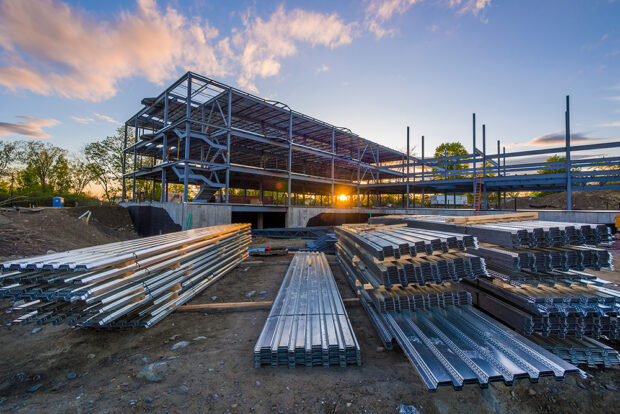Historic and unpredictable inflation—which hit 9.1 percent in July 2022—makes it particularly challenging for property insurers to maintain insurance-to-value (ITV)[1]. Underwriters rely on up-to-date property information to estimate the cost of rebuilding after a loss, but rapidly changing prices for labor and materials make it increasingly difficult to guarantee the accuracy of that data.
Without reliable property information, insurers are more likely to under- or overvalue replacement cost estimates (RCEs). Undervaluing the RCE can hurt insurers’ underwriting results in the event of a claim or leave their clients without appropriate coverage limits. Overvaluing the RCE could mean losing business to a rival with a more attractive quote.
Commercial property insurers generally have fewer claims than residential insurers because overall claim volume is lower and commercial buildings are less prone to total loss. But commercial replacement costs have significantly increased; the cost to rebuild a commercial property today is, on average, 7.6 percent higher than in July 2021—one of many peaks during the pandemic[2]. These trends emphasize that commercial lines insurers need ongoing access to accurate, up-to-date pricing for labor and materials as much as residential insurers do when calculating RCEs for new policies or renewals. And not just labor and materials costs in general, but those specific to commercial building construction, such as steel, concrete, and rubber roofing.

The good news is commercial insurers now have unprecedented access to regularly updated, localized, and components-based materials and labor costs to build dependable RCEs.
In the past, commercial lines insurers often used inflation-based indexes when calculating replacement costs at the time of renewal. During periods of extreme price fluctuations (as we’re experiencing now), the inflation rate may not reflect actual materials and labor costs. In fact, Verisk’s research shows that commercial reconstruction prices have outpaced inflation for several years. The need for up-to-date information is more important than ever to help ensure RECs reflect current marketplace realities.
The good news is commercial insurers now have unprecedented access to regularly updated, localized, and components-based materials and labor costs to build dependable RCEs. Powerful analytic solutions can help them calculate replacement costs based on actual historical claims in the region where the structure is located. Monthly adjustments that reflect what’s happening in a volatile market can mitigate the large spikes that may accompany less frequent updates—and smaller changes with each pricing update may mean fewer surprises for carriers and agents quoting a new policy or renewal.
360Value for Commercial Property
As instant data services proliferate, insurers may feel they have more options than ever for getting quick RCEs and beating competitors to the punch. But how can they be sure they’re getting reliable data that actually supports ITV?
360Value® for Commercial Property combines ProMetrix® data for more than 15.6 million commercial properties with the real-world claims data from Xactimate®—which is used for 90 percent of all U.S. property claims—to help customers get the most reliable, component-based estimate on the books from day one. By continually expanding commercial property data, Verisk has increased 360Value’s prefill hit rate to roughly 75 percent. High-quality prefill for more properties can help streamline underwriting. And once an insurer writes a policy with a reliable RCE, recalculating premiums at renewal with real-world costs can help avoid the pitfalls of indexing to values that don’t necessarily reflect market realities.
Learn more about how current market volatility affects commercial reconstruction costs and how 360Value can help insurers maintain ITV in the latest edition of Inside the Data – Verisk Commercial Property.
[1] https://www.bls.gov/news.release/cpi.nr0.htm
[2] Verisk data



















 Brazen $30M Los Angeles Cash Heist Explained
Brazen $30M Los Angeles Cash Heist Explained  NICB: 2023 Was Another Record-Breaking Year for Vehicle Thefts
NICB: 2023 Was Another Record-Breaking Year for Vehicle Thefts  Ford Recall of 43,000 SUVs Due to Fire Risk Won’t Remedy Gas Leaks
Ford Recall of 43,000 SUVs Due to Fire Risk Won’t Remedy Gas Leaks 


